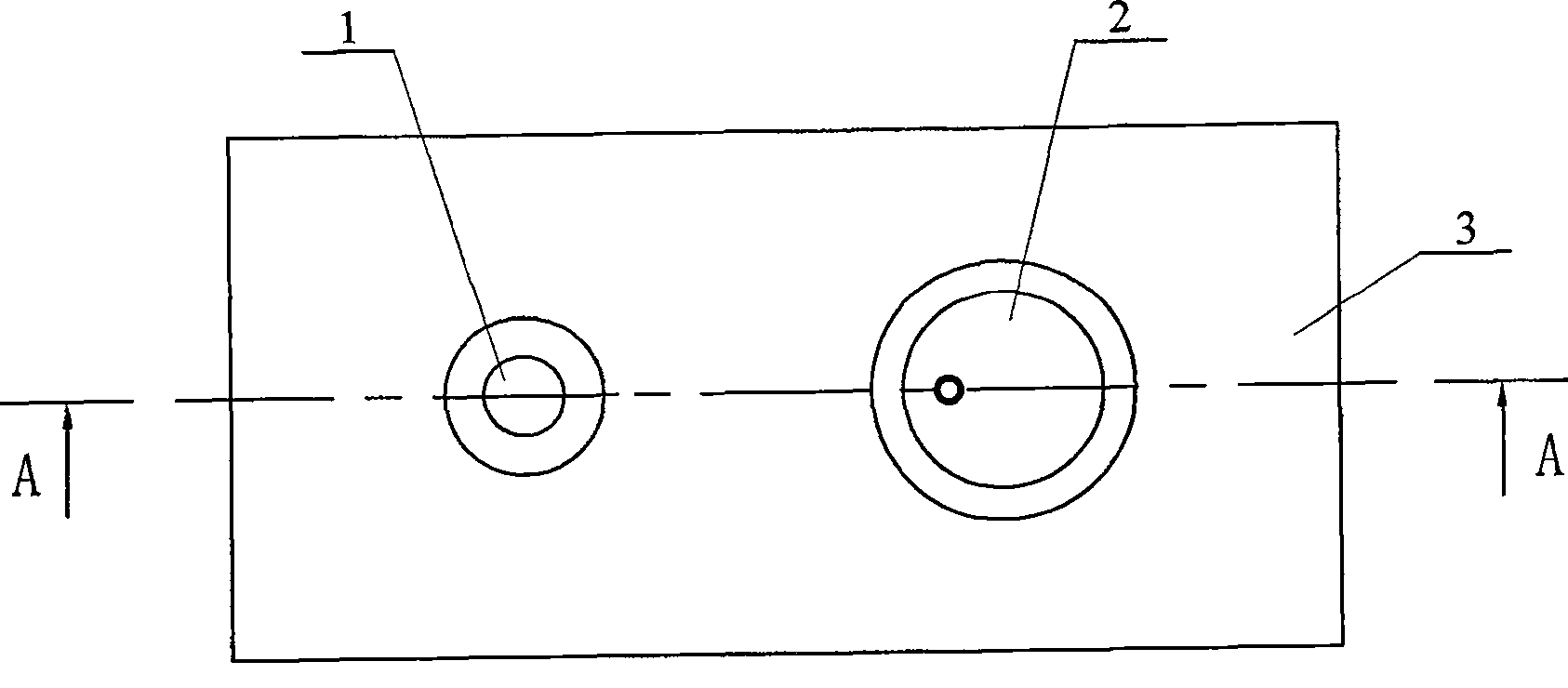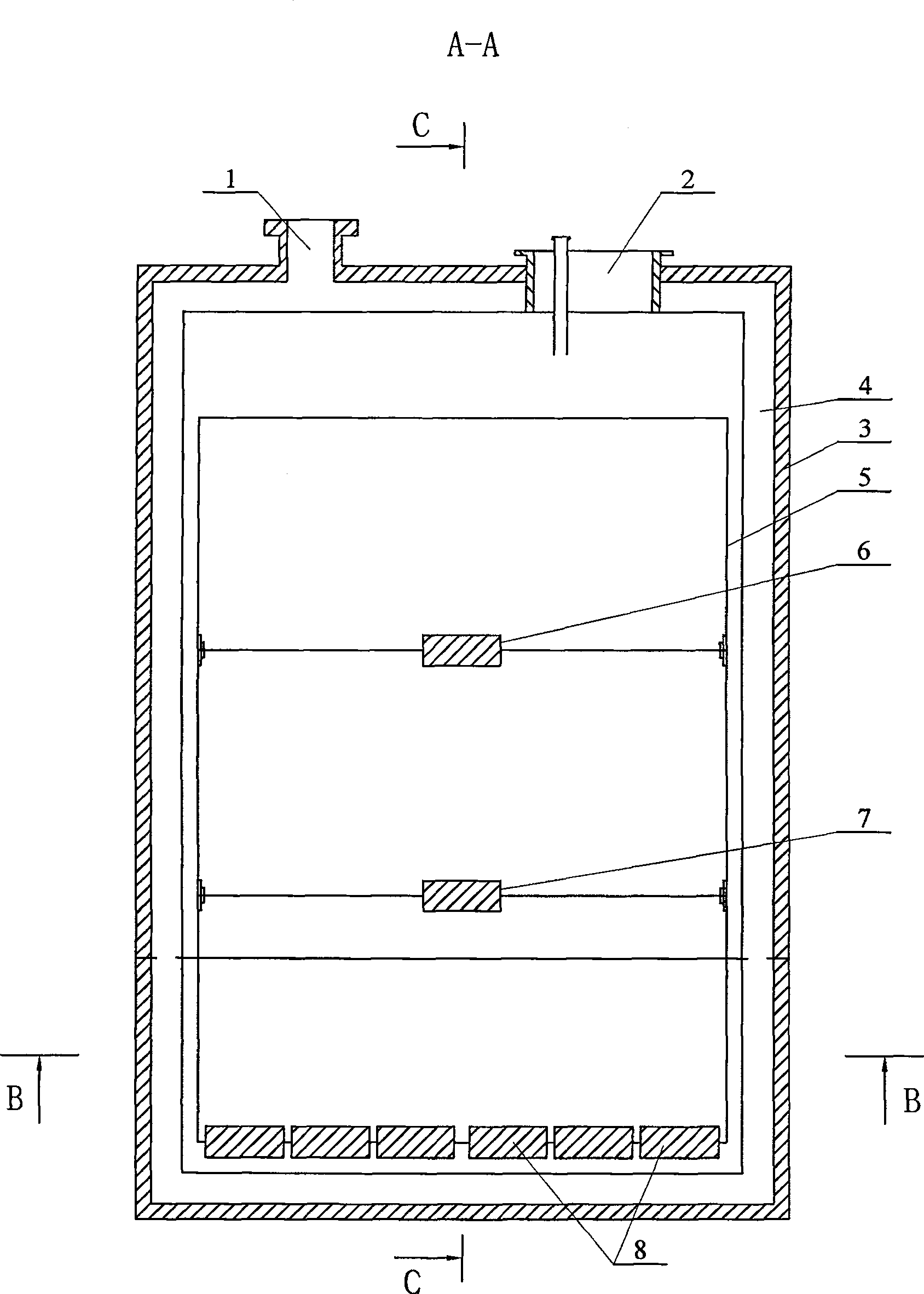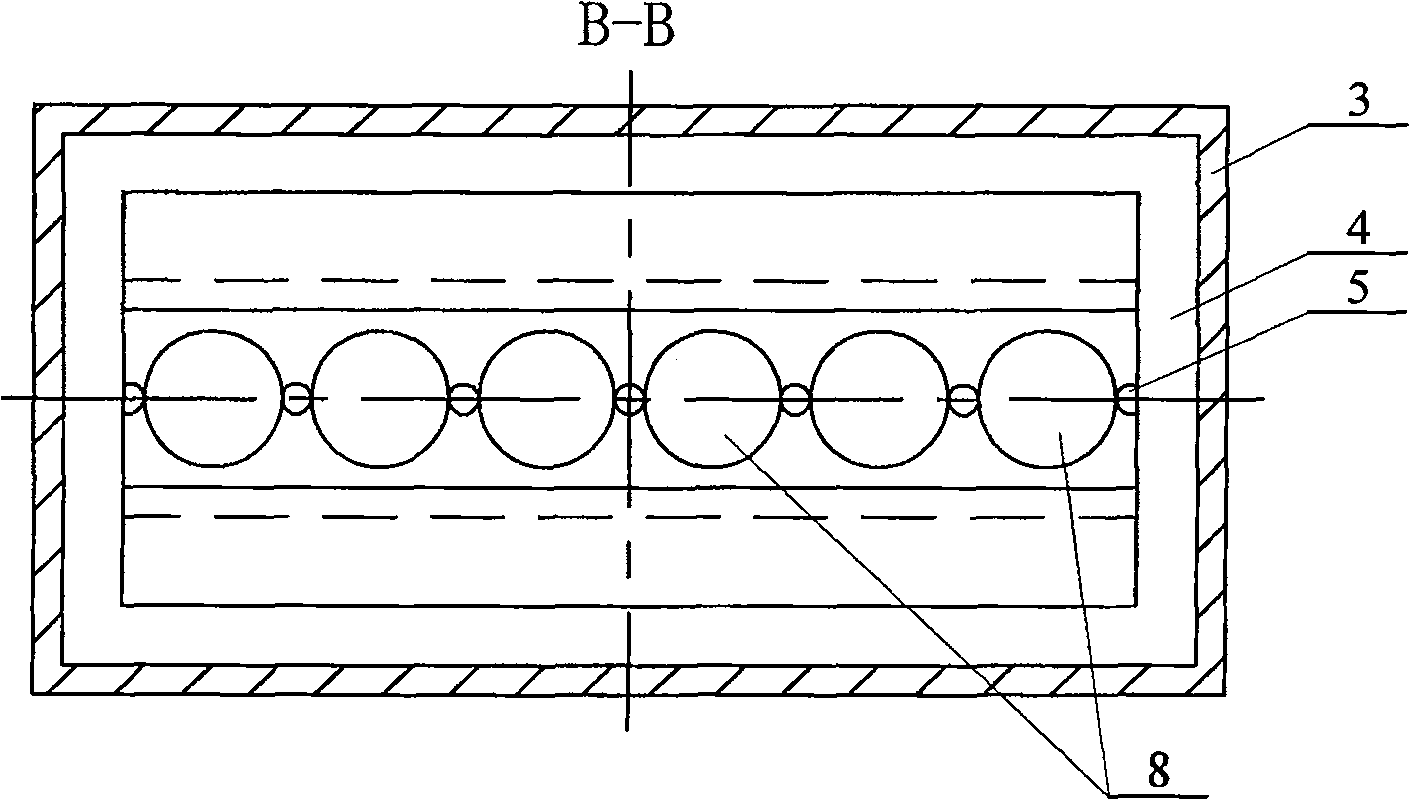Probe of magnetocardiograph
A magnetocardiograph and axis technology, applied in medical science, sensors, diagnostic recording/measurement, etc., can solve problems such as measurement errors, achieve high measurement accuracy, easy operation, and reduce measurement errors
- Summary
- Abstract
- Description
- Claims
- Application Information
AI Technical Summary
Problems solved by technology
Method used
Image
Examples
Embodiment 1
[0016] combine figure 1 , figure 2 , image 3 , Figure 4 As shown, the present invention is made up of non-magnetic Dewar shell 3, fixed support 5, main sensor 8 and reference sensor, and fixed support 5 is arranged in the non-magnetic Dewar shell 3 and between the non-magnetic Dewar shell 3 A vacuum heat insulation layer 4 is formed; the non-magnetic Dewar shell 3 is provided with an air suction port 1 communicating with the vacuum heat insulation layer 4; the non-magnetic Dewar shell 3 is also provided with a cable for connecting cables and filling liquid nitrogen Channel 2, the cable channel 2 communicates with the inner cavity of the fixed bracket 5; the main sensor 8 includes six SQUID sensors, and is fixed on the inner surface of the bottom of the fixed bracket 5 along the center line of the bottom surface of the fixed bracket 5; the reference sensor adopts a The SQUID sensor 7 is fixed in the middle of the axis of the fixed bracket 5, and the distance between the f...
Embodiment 2
[0020] combine figure 1 , figure 2 , image 3 , Figure 4 As shown, the difference between this embodiment and Embodiment 1 is that the reference sensor is composed of a first SQUID sensor 7 and a second SQUID sensor 6, and the second SQUID sensor 6 is arranged above the first SQUID sensor 7 And respectively fixed in the middle of the axis of the fixed bracket 5; the distance between the first SQUID sensor 7 and the main sensor 8 is 80-100 mm, and the distance between the second SQUID sensor 6 and the first SQUID sensor 7 is 60-80 mm. The six SQUID sensors in the main sensor 8 described in this embodiment and the two SQUID sensors in the reference sensor form a second-order gradiometer, which jointly realize the signal detection function and further enhance the effect of suppressing interference.
PUM
 Login to View More
Login to View More Abstract
Description
Claims
Application Information
 Login to View More
Login to View More - R&D
- Intellectual Property
- Life Sciences
- Materials
- Tech Scout
- Unparalleled Data Quality
- Higher Quality Content
- 60% Fewer Hallucinations
Browse by: Latest US Patents, China's latest patents, Technical Efficacy Thesaurus, Application Domain, Technology Topic, Popular Technical Reports.
© 2025 PatSnap. All rights reserved.Legal|Privacy policy|Modern Slavery Act Transparency Statement|Sitemap|About US| Contact US: help@patsnap.com



